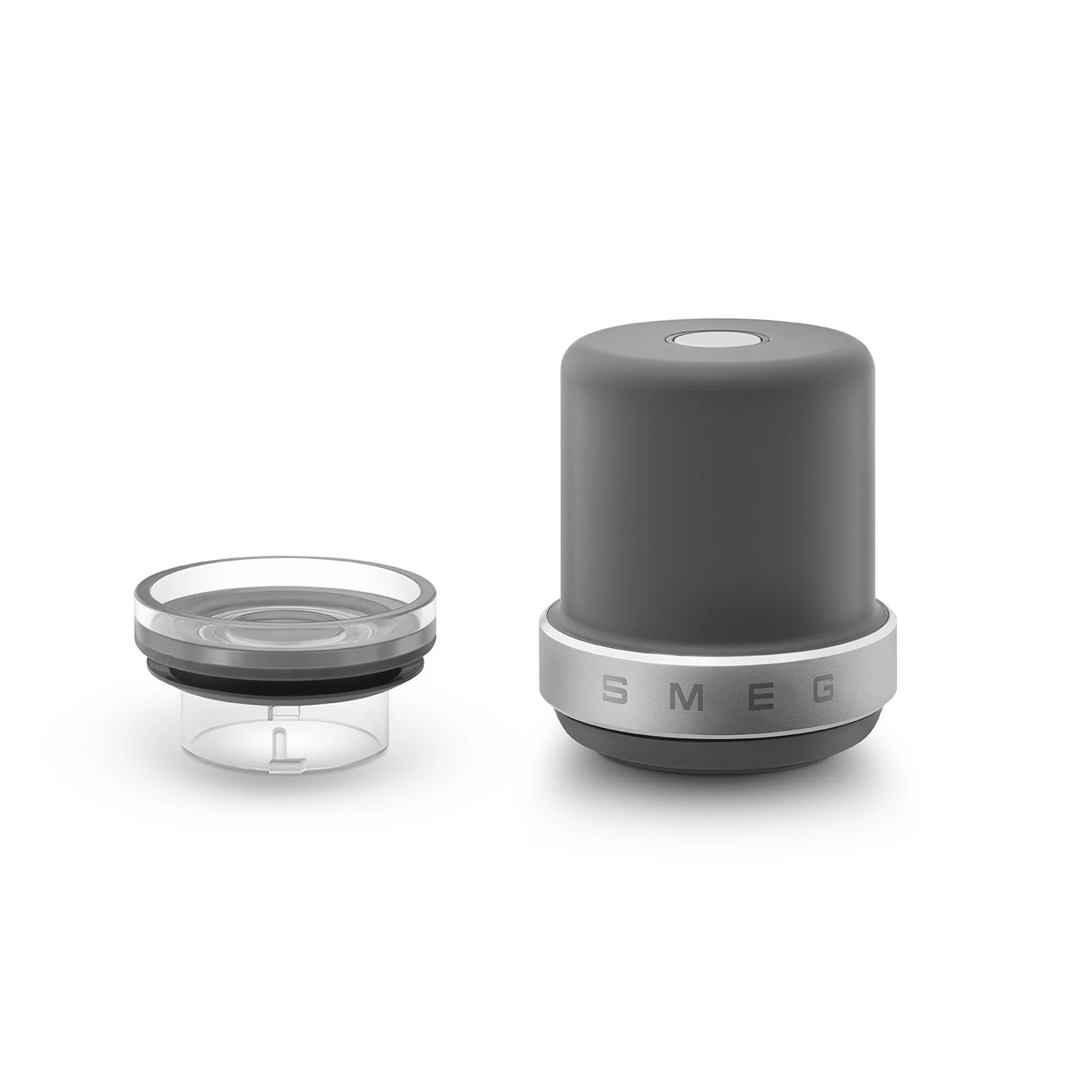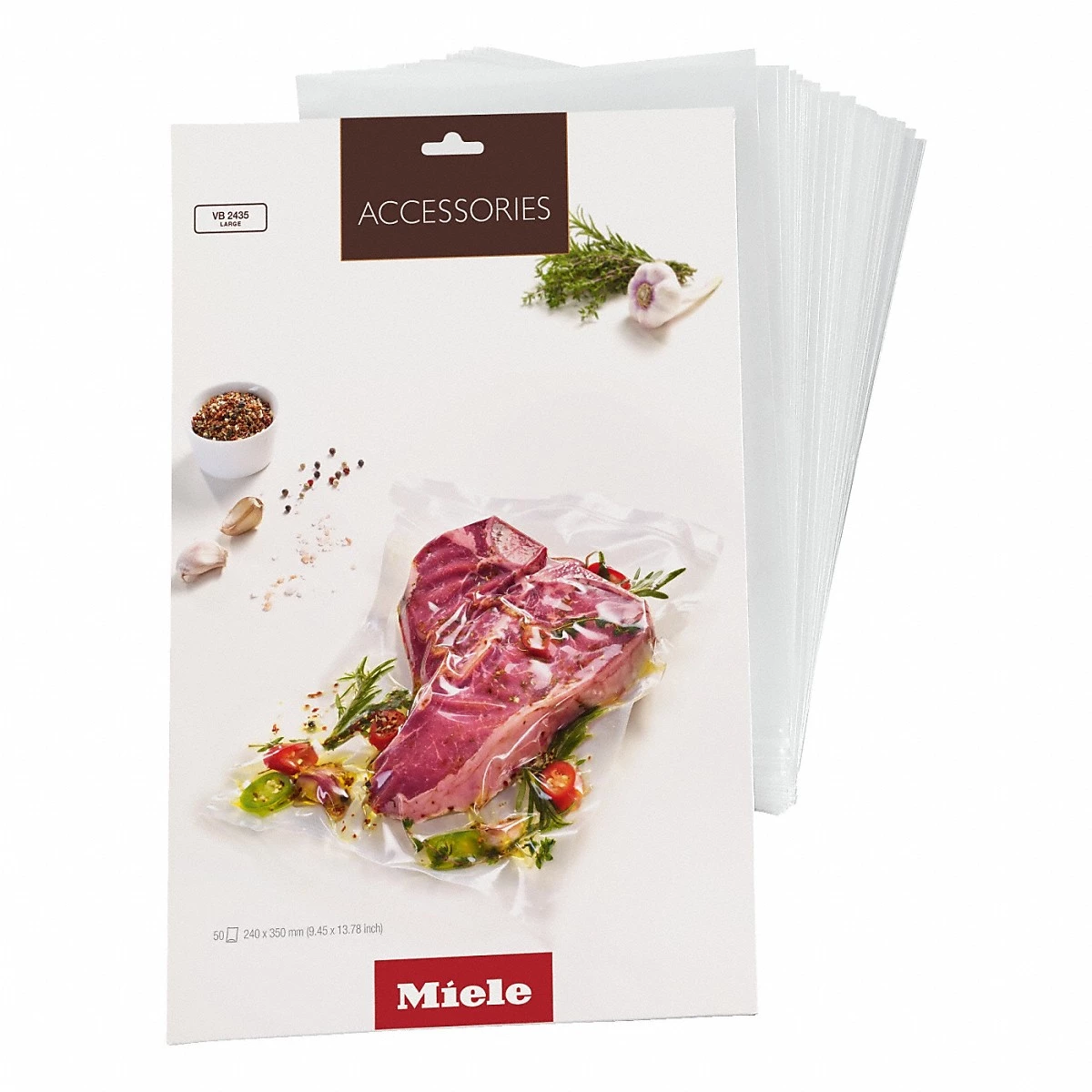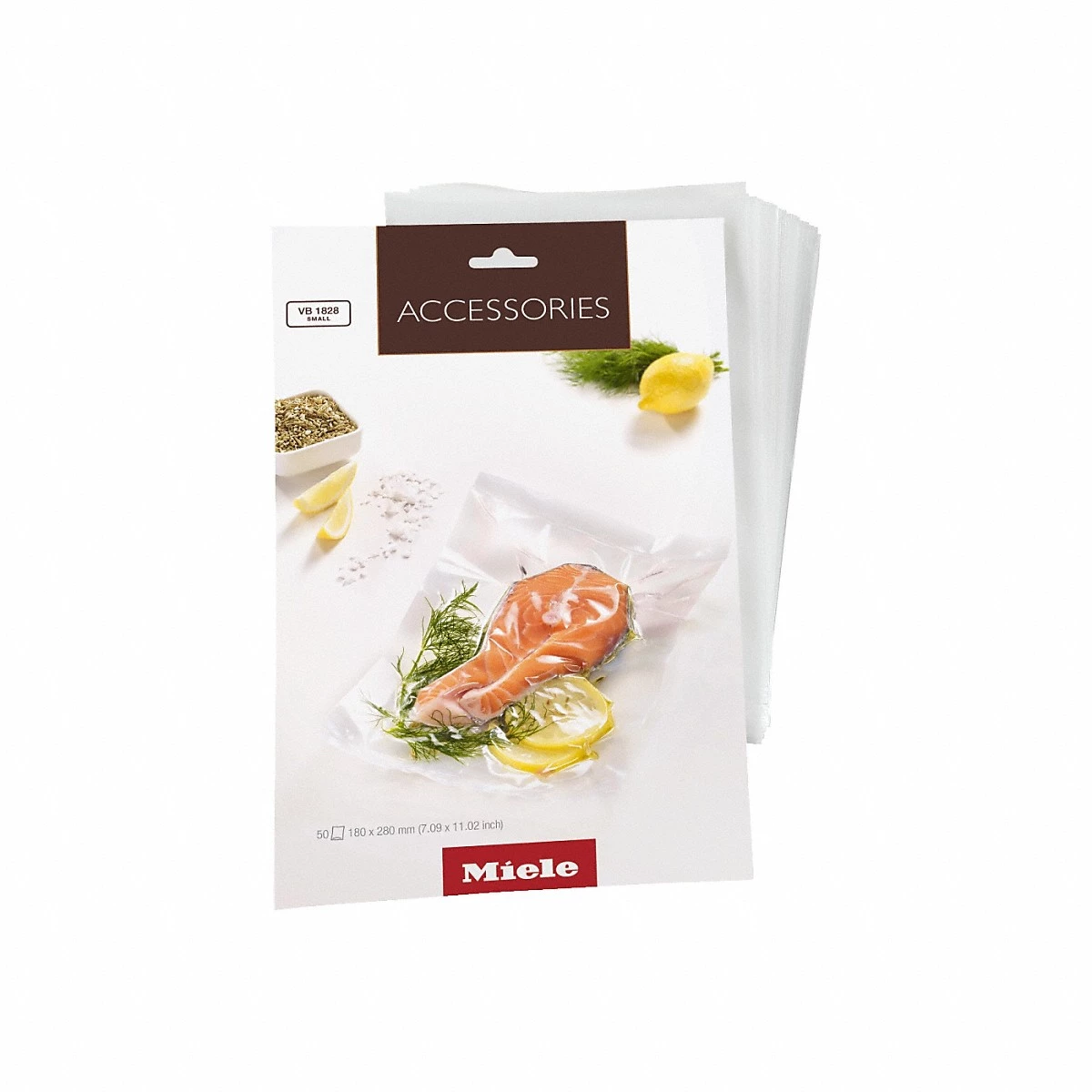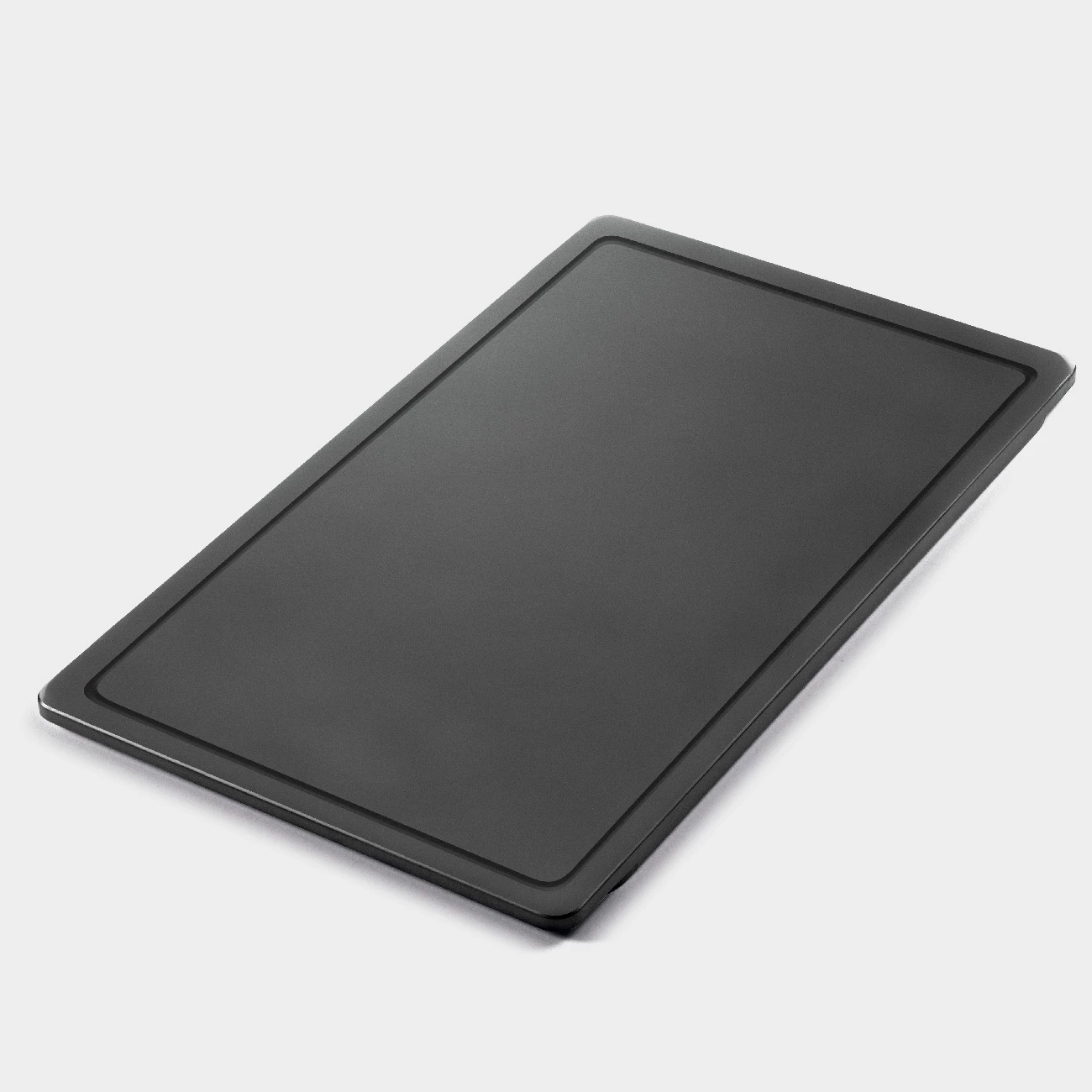
Kitchen Herbs from A-Z
In Mykitchens Magazine, we list the most important kitchen herbs from A-Z.
reading time: about 2 minutes
No recipe tastes particularly good without the right spices! But which spice is suitable for which recipe? And what culinary herbs are there? We've listed the most important herbs and spices for the kitchen and present the most popular culinary herbs and herb blends you need to know here in Mykitchens Magazine.
Culinary Herbs from A-Z
Culinary herbs, also called garden herbs, are all herbs and spices that can be eaten raw or cooked. Find the most important herbs and spices for the kitchen in our A-Z list.
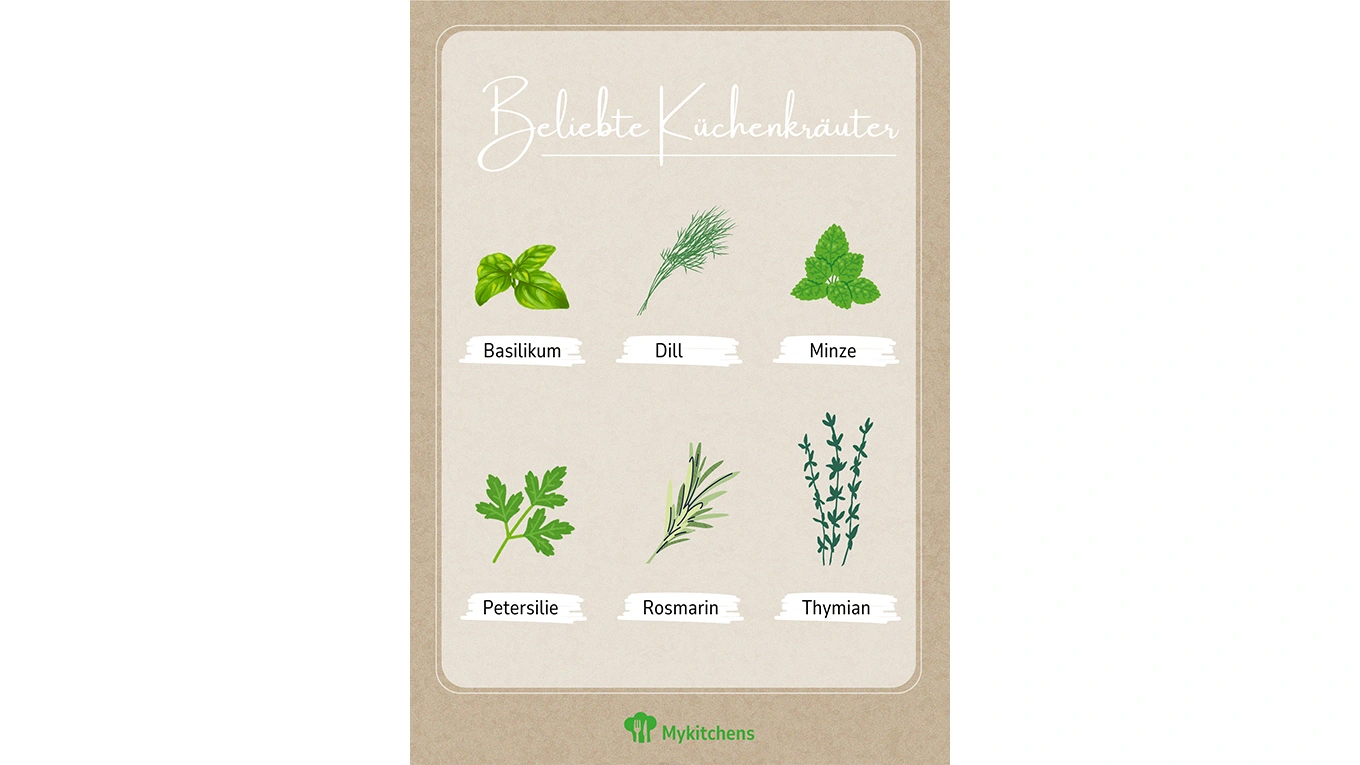
- A: Anise
- B: Basil
- C: Caraway seeds, Chamomile, Chervil, Chives, Cinnamon, Coriander, Cress, Curry herb
- D: Dill
- E:
- F: Fennel
- G:
- H:
- I:
- J:
- K:
- L: Lavender,
Laurel, Lemon balm,
Lovage
- M: Majoram,
Marigold,
Melissa, Mint,
Mugwort
- N: Nutmeg
- O: Oregano
- P: Parsley
- Q:
- R: Rosemary
- S: Sage, Savory
- T: Tarragon, Thyme
- U:
- V:
- W: Watercress, Wormwood
- X:
- Y:
- Z:
Planting herbs for your own herb garden
The easiest way, of course, is to buy herbs ready-made. As fresh plants, dried herbs, or fresh bushes. But you can also easily plant herbs yourself. You just need to know how to care for, harvest, and store them.
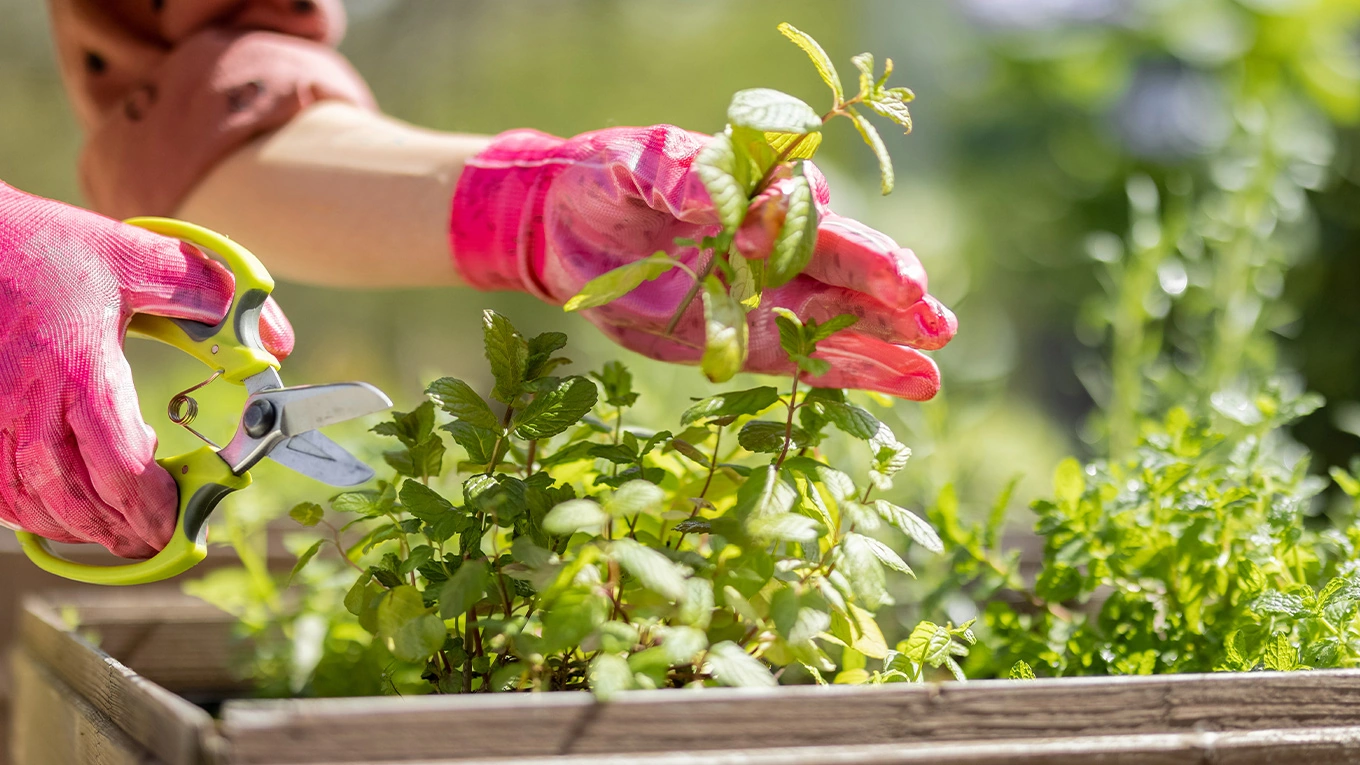
Which herbs go together?
Unless you're a huge fan of a particular spice, you'll naturally want to plant several herbs in your herb garden. However, not all herbs can be planted together in a herb bed. Wormwood and lovage, for example, should be planted separately, as they can otherwise inhibit the growth of other herbs. Plants that need the same growing conditions (e.g., sunlight, specific soil, watering intervals, etc.) go well together. Rosemary, oregano, and thyme, for example, can be planted next to each other as herbs. Or basil and parsley.
These herbs harmonize well with others (exceptions in parentheses):
- Lavender (except parsley)
- Lemon balm (except basil)
- Basil (except sage and thyme)
These herbs are hardy
There are some hardy herbs that can be kept outside even in cold weather, e.g.:
- Sage
- Thyme
- Some rosemary varieties
- Lavender
- Wild savory
- Chives
- Lovage
- Some mint varieties
- Lemon balm
Preserving Your Own Herbs
You usually have a lot of herbs left over from your herb garden. And these can be easily preserved. There are several ways to preserve herbs. Two of them are drying and freezing.
Drying Herbs
Most herbs can be dried and thus preserved well. There are various ways to dry herbs, such as air drying. The herb bundles are hung upside down and then dried for 24 to 48 hours at a temperature between 20 and 30°C.
Some herbs can also be dried in the microwave. Microwave at low wattage in 30-second intervals until the herbs are dry (approximately 2-3 minutes in total, depending on the variety). Then, w
After drying, the herbs can be placed in sealed containers. They will keep for about a year.
Freezing Herbs
A good way to preserve herbs is to freeze them. To do this, the herbs must be washed and dried. Then, the desired portion is placed in a freezer container (e.g., a freezer bag) and frozen. Chopped herbs can also be easily frozen in ice cube trays filled with clean water.
Frozen herbs will last up to 12 months.
But not all herbs can be frozen! Rosemary, thyme, oregano, and marjoram, for example, quickly lose their flavor and are best enjoyed fresh or dried.
Popular Herb Blends
Some herbs harmonize particularly well with others and are offered in herbal blends or can be mixed together. Two popular herbal blends are Herbs de Provence and Italian Herbs.

Herbs of Provence
Herbs of Provence is a spice blend made with the finest herbs from the French Provence. It usually consists of three basic ingredients: basil, thyme, savory, rosemary, and oregano. Bay leaves or lavender are sometimes added.
Italian Herbs
Italian herbs are a spice blend containing the finest Italian herbs and spices. Typically, they include rosemary, basil, oregano, thyme, and marjoram. Garlic, onions, parsley, tarragon, lovage, or paprika are also often added.
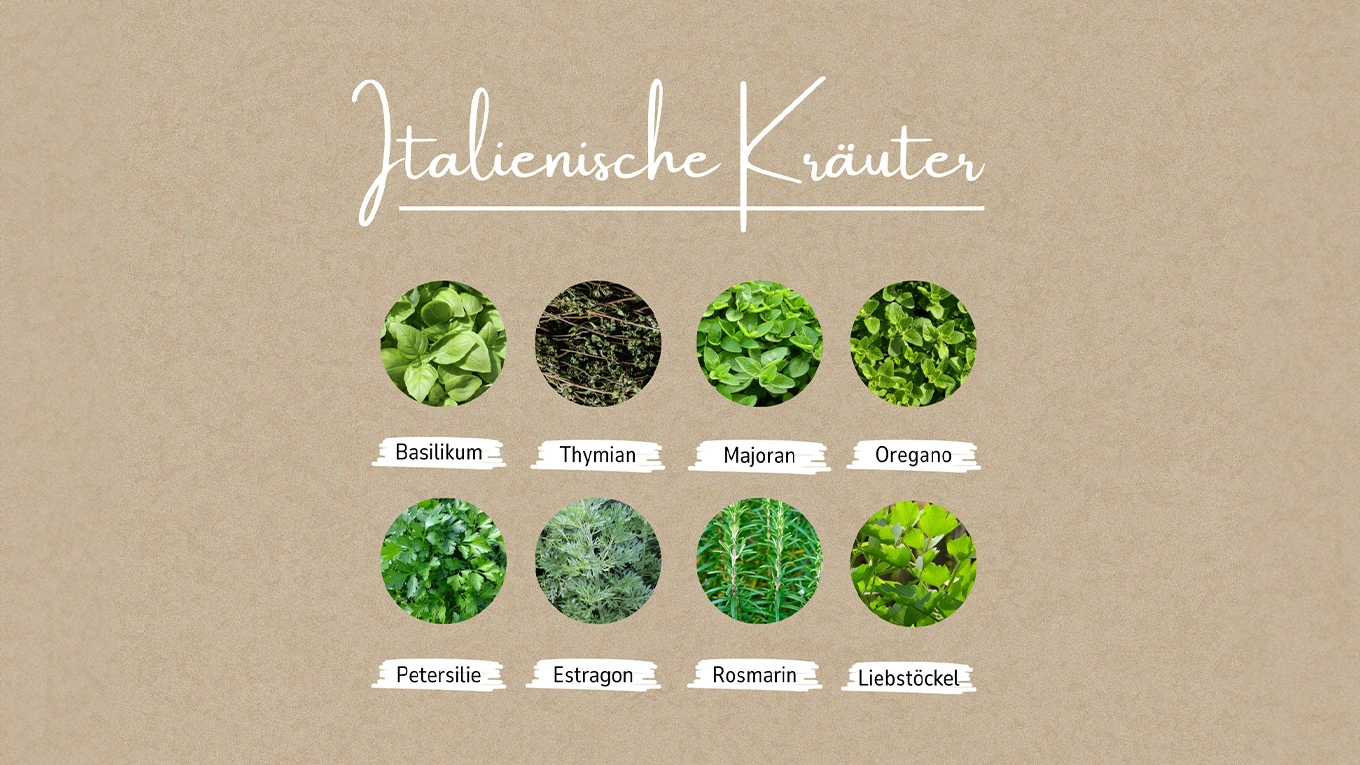
Popular Herbs for Cooking
Some herbs for cooking are more popular than others. We've listed the three best herbs and their most important properties.
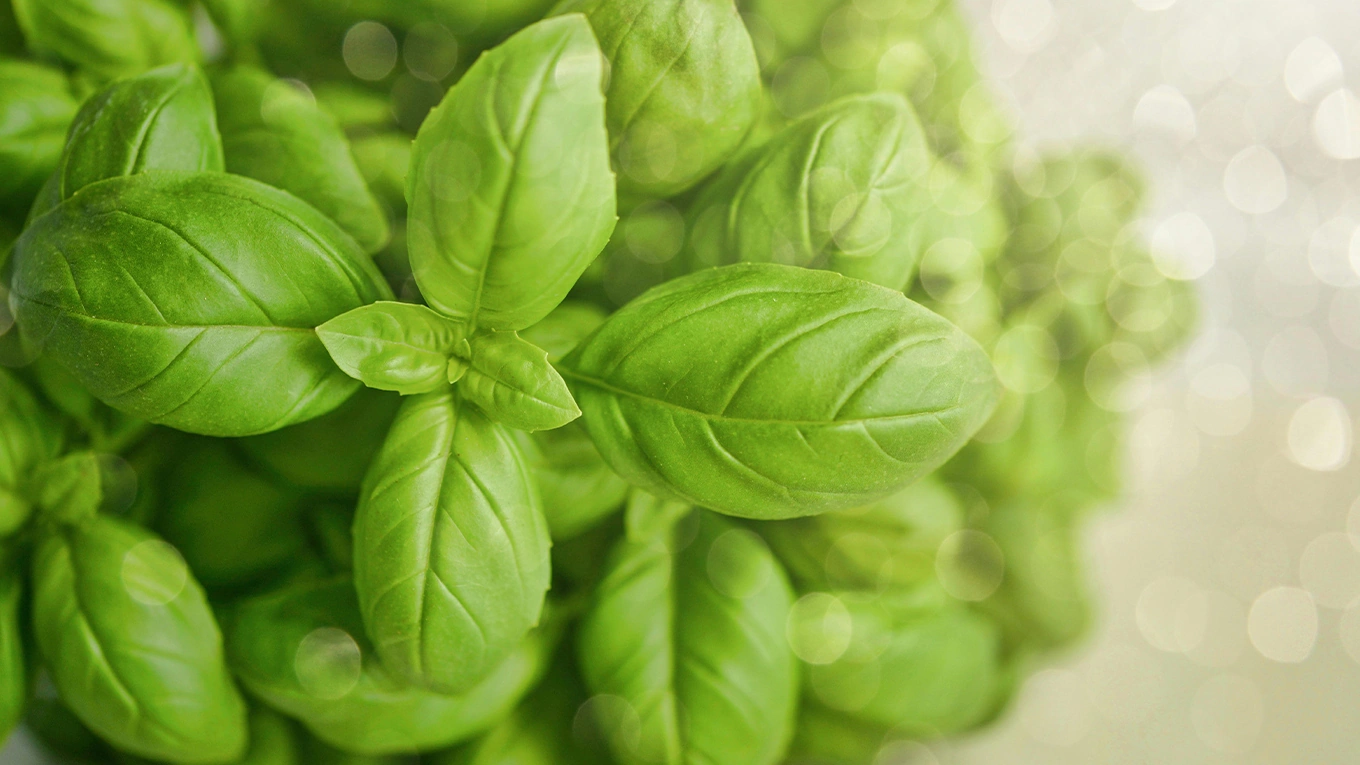
Basil
Basil (Ocimum basilicum) is a popular spice in Mediterranean cuisine. However, basil originally grows in the tropics. Therefore, this culinary herb needs a sunny and warm location in the home herb garden. The plant should be watered regularly and the soil kept moist at all times. Whole basil stems are then cut for harvesting.
Basil is mainly used as a seasoning herb to garnish dishes such as pizza, pasta, salads, and antipasti. It is best eaten raw. Depending on the variety, basil can taste different. Generally, it is very spicy and slightly bitter. Because it contains so many essential oils, the flavor and aroma of basil are very intense, which is why just a few leaves are enough to enhance dishes.
Parsley
Parsley (Petroselinum crispum) is a popular native herb, but originally comes from southeastern Europe. It is used to refine fish and meat, sauces and soups, and vegetables. A distinction is made between flat-leaf parsley and root parsley.
Anyone who wants to plant parsley needs a bright to partially shaded location and plenty of moisture. After flowering, the parsley leaves are no longer edible and are even poisonous if eaten.
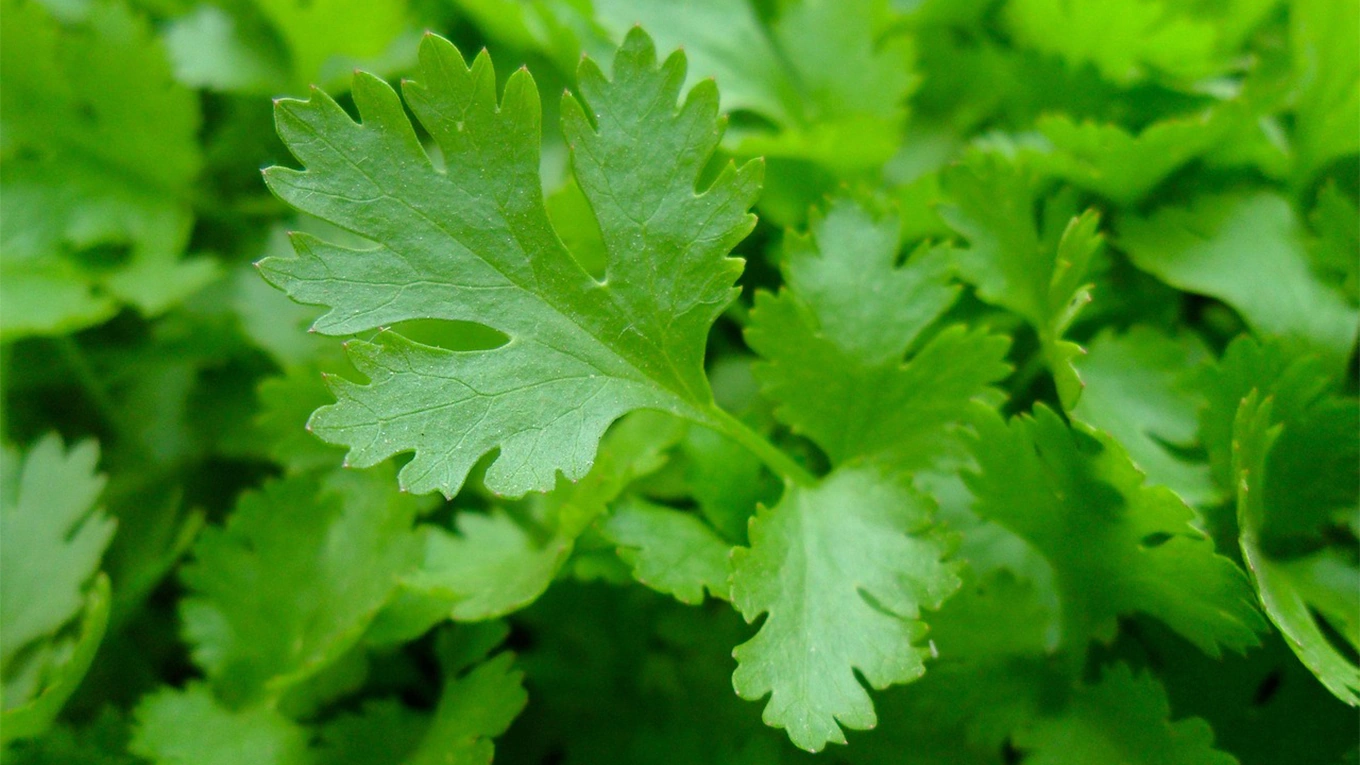
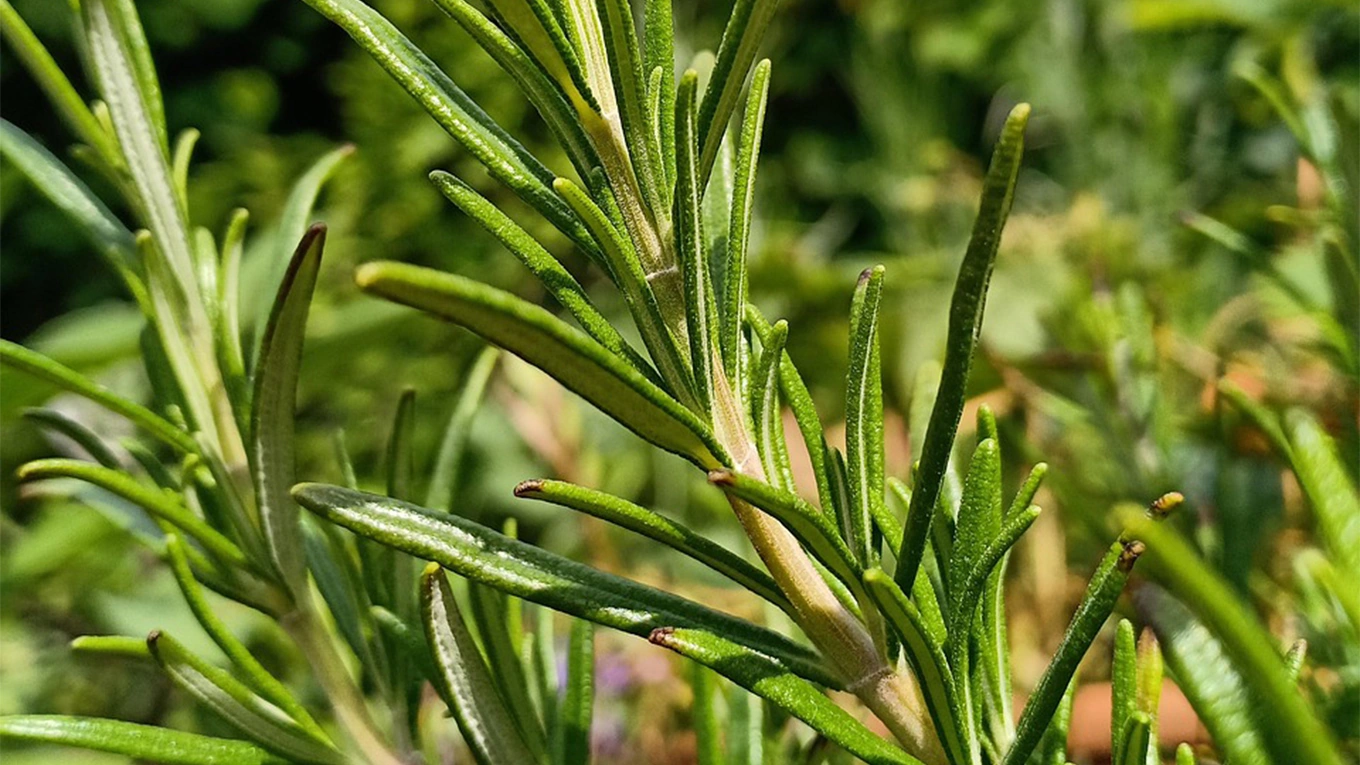
Rosemary
Rosemary (Rosmarinus officinalis) is a typically Mediterranean spice that is very intense and should therefore be used sparingly. It blends well with other Mediterranean herbs such as thyme and oregano. This Mediterranean medicinal and herbal plant enjoys warm, sunny conditions and is also extremely robust.

